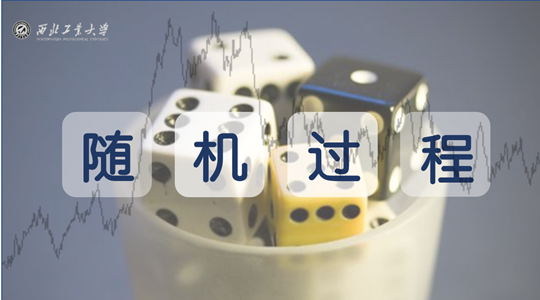
当前课程知识点:Modern Aesthetics:Mechanism and Laws > Chapter8 The Laws of Aesthetic Psychology Formed by Sensory Organs > 8.4 The Role of Tactile Sense in Aesthetic Activities > 8.4.1 Video
返回《Modern Aesthetics:Mechanism and Laws》慕课在线视频课程列表
返回《Modern Aesthetics:Mechanism and Laws》慕课在线视频列表
同学们好
今天我们讲
触觉在审美中的作用
触觉也称为压觉
是皮肤下的感受器
受到外部压力
或者接触到外部事物时产生的感觉
生理学研究发现
人体皮肤下分布着
触觉
痛觉
冷觉
温觉等
多种感受器
共同构成皮肤与外物接触的感觉
触觉感觉器在人体各部位的分布密度不同
脸面
嘴唇
指尖等处密度较高
手背
背部则较低
感受器密度高的部位
触觉的灵敏度就大
反之密度低的部位
灵敏度就小
触觉分为
被动触觉和主动触觉两种类型
被动触觉是外部事物接触我们的皮肤所致
主动触觉为我们主动接触外物所产生
触觉因为能够引起愉快的感觉
所以成为形成审美心理的因素
触觉形成审美心理的过程
同一般功利物形成审美心理的过程相同
当触觉接触对象引起快感时
对象的样子
以及同时进入大脑皮层的视觉信号
就会从大脑皮层的视觉区向快感区集中
从而
在二者之间建立起新的神经联系通道
这种联系通道稳定下来以后
就形成了人的审美心理
对象样子的信号就会引起
原本由触觉引起的愉快感觉
在现实生活中
吻和爱抚
是触觉产生愉悦感觉的重要方式
有一首流行歌曲叫做妈妈的吻
讲述妈妈充满母爱的吻
温暖儿童幼小的心灵
给孩子无限的快乐
我们在介绍人际影响形成审美心理规律时
曾经谈到母亲的形象
如何成为子女审美心理的过程
在这个过程中
母亲的吻和爱抚带来的快感
就是其中重要的因素
吻和爱抚为什么会令人愉悦呢
1974年
美国人西蒙发现
人大脑的某些细胞表面薄膜上
有一种特别的吗啡受体
一年后
英国人休斯和凯斯特勒两人
几乎与美国及瑞典的两个科研小组
同时发现
人的大脑能产生一种化学结构相似的物质
这种物质被称为内生吗啡
内生吗啡也被人称为快感的激素
疼痛的镇静剂
它的功效与止痛药物
以及产生快感的物质中的吗啡相似
我们的痛觉
愉快
和抑郁
往往取决于大脑产生的内生吗啡的多少
科学家们发现
爱抚会促使内生吗啡增加
从而使被爱抚者产生快乐的感觉
20世纪初
瑞典和加拿大医生发现
人类有一种特殊的神经
他们称之为C 触觉神经
该神经与一般触觉神经不同的是
它仅对轻微
缓慢的爱抚产生反应
并刺激大脑神经中枢产生兴奋
强烈的外部因素
都不会使C-触觉神经产生反应
研究人员认为
C-触觉神经
可以唤醒人的浪漫情绪和性爱
所以也有人称其为爱情神经
触觉形成审美心理的另一种形式
表现为人们对于事物手感的选择
一般而言
人们总是倾向于选择比较细腻光滑的材料
特别是选择衣服的材料时更是如此
在古代
当丝绸出现以后
人们对于丝绸的喜爱远远超出当时的粗布
当中国的丝绸通过中亚到达欧洲
受到欧洲人的普遍喜爱
导致了著名的丝绸之路的产生
为什么细腻光滑的材料
较之粗糙的材料更为人们喜爱呢
因为细微的刺激
能够通过皮肤浅层的触觉感觉器
引起人愉悦的感觉
生活中
人们追求手感的舒服
实际上就是追求这种愉悦的感觉
丝绸成为美的服饰
受到人们的喜爱
在这种审美现象的背后
起决定作用的就是人的触觉
在现实生活中
人们对于木制家具的喜爱
普遍胜过金属家具
从功能的角度讲
金属家具更经久耐用
在工业社会制作也更为方便
但为什么却不如木制家具受欢迎呢
有人认为
金属家具不如木家具美观
那为什么木家具比金属家具美观呢
一个重要的原因
在于金属家具导热性能强
人体接触的感觉是冷冰冰
相比较金属家具来说
木家具人体接触起来就比较舒服
这种不同的触觉效果
形成了人们对二者不同的审美感受
这种审美现象的产生
同样是触觉在悄悄地
形成人们的审美心理
今天就讲到这里
谢谢大家
-1.1 Exercises
-2.1 The Origin of Aesthetics
--2.1.2 Exercises
-2.2 The Findings of "Beauty" in Traditional Aesthetics
--2.2.2 Exercises
-2.3 The End of Traditional Aesthetics
--2.3.2 Exercises
-2.4 The Rise of Modern Aesthetics
--2.4.2 Exercises
-3.2 Exercises
-4.1 Research Object of Aesthetics
--4.1.2 Exercises
-4.2 The Composition of Aesthetic Phenomena
--4.2.2 Exercises
-4.3 Classification of the Aesthetic Phenomena
--4.3.2 Exercises
-5.1 The Causes of Aesthetic Sense of the Manifest Utilitarian Aesthetic Objects
--5.1.2 Exercises
-5.2 Reasons for Aesthetic Sense in the Hidden Utilitarian Aesthetic Objects
--5.2.2 Exercises
-5.3 Mechanisms of Aesthetic Phenomena
--5.3.2 Exercises
-6.1 Interpersonal Influence Forms of Aesthetic Psychology Law
--6.1.1.1 Exercises
--6.1.2.2 Exercises
-6.2 Social Status Forming the Aesthetic Psychological Law
--6.2.1.2 Exercises
--6.2.2.2 Exerxises
-6.3 The Level of Social Development Forms the Law of Aesthetic Psychology
--6.3.2 Exercises
-6.4 The Pursuit of Utility Forms the Law of Aesthetic Psychology
--6.4.1.2 Exercises
--6.4.2.2 Exercises
--6.4.3.2 Exercises
--6.4.8 Exercises
-7.1 The Instinct of Curiosity Forms the Aesthetic Psychological Law
--7.1.2 Exercises
-7.2 The Sexual Instinct Forms the Aesthetic Psychological Law
--7.2.2 Exercises
-7.3 The Creative Instinct Forms the Aesthetic Psychological Law
--7.3.2 Exercises
-7.4 The Life Instinct Forms the Aesthetic Psychological Law
--7.4.2 Exercises
-8.1 The Role of Vision in Aesthetic Activities
--8.1.2 Exercises
--8.1.4 Exercises
-8.2 The Role of Vision in Aesthetic Activities
--8.2.2 Exercises
--8.2.4 Exercises
-8.3 The Role of Smell in Aesthetic Activities
--8.3.2 Exercises
-8.4 The Role of Tactile Sense in Aesthetic Activities
--8.4.2 Exercises
-8.5 The Role of Temperature Sense in Aesthetic Activities
--8.5.2 Exercises
-8.6 The Role of Spatial Sense in Aesthetic Activities
--8.6.2 Exercises
-9.1 The Law of Aesthetic Psychological Enhancement
--9.1.2 Exercises
-9.2 The Law of Aesthetic Psychological Decline
--9.2.2 Exercises
-10.1 The Formation of Basic Forms of Art
--10.1.2 Exercises
-10.2 Mechanism by which the Basic Form of Art Causes Aesthetic Feelings
--10.2.2 Exercises
-10.3 Mechanisms in which Artistic Content Arouses Aesthetics
--10.3.2 Exercises
--10.3.4 Exercises
--10.3.6 Exercises
--10.3.8 Exercises
-10.4 The Special Law of Artistic Aesthetics
--10.4.2 Exercises
--10.4.4 Exercises
--10.4.6 Exercises
--10.4.8 Exercises
-Modern Aesthetics and Moral Education
-11.1 Function and Mechanism of Aesthetic Education
--11.1.2 Exercises
--11.1.4 Exercises
-11.2 Approaches to Aestheticization Education
--11.2.2 Exercises
-11.3 Approaches to Pure Aesthetic Education
--11.3.2 Exercises
-11.4 Method of Aesthetic Self-Cultivation
--11.4.2 Exercises



